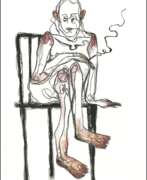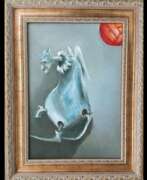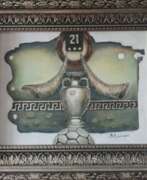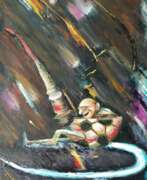Grotesque

Grotesque
Grotesque, a term rooted in the Italian word 'grottesca', meaning cave-like, has evolved significantly from its origins. Originally describing the decorative elements of Nero's Domus Aurea, it has since come to encompass weird shapes, distorted bodies, and discomforting faces in art. Grotesque art flourished during the Renaissance, where it often featured in margins of medieval manuscripts as exaggerated caricatures.
The genre of grotesque extends far beyond simple physical distortion. It delves into the realms of satire, tragicomedy, and social critique. This genre has been explored by numerous artists, including Leonardo da Vinci, whose caricatures are direct continuations of medieval traditions. In the 16th and 17th centuries, grotesque became synonymous with ghastly and absurd imagery, often used as a means to critique or satirize societal norms and beliefs.
Contemporary artists have also embraced the grotesque to challenge and subvert power structures and societal norms. For example, Jala Wahid's sculptures engage in a visceral exploration of the Kurdish body, using the grotesque to comment on political and social issues. Similarly, Doreen Garner's silicone sculptures, portraying the trauma inflicted on the bodies of enslaved black women, exemplify the grotesque's power to evoke empathy and shock.
Significant works of grotesque art are featured in prestigious institutions like the National Gallery in London and the Louvre Palace in Paris. These pieces not only offer visual intrigue but also provoke deep thought and reflection, making them invaluable to collectors and art experts.
For those fascinated by the peculiar and profound world of grotesque art, staying informed on the latest developments and auctions in this genre is crucial. Subscribe for updates and join a community that appreciates the beauty and complexity of grotesque art.
| Country: | Europe, Italy |
|---|---|
| Start of the period: | XV century |




